Mortality
Jacob Steinhardt
1913–1914
Image

Engage with this Source
Creator Bio
Jacob Steinhardt
1889–1968
Born in Zerkow, Germany (today, Żerków, Poland), the painter and woodcut artist Jacob (Jakob) Steinhardt studied in Berlin before World War I and was much influenced by the Expressionist movement. As a soldier in the German army during the war, he served in the Lithuanian region and Poland, where his encounter with traditional East European Jewish society left a lasting impression on him and his work. In 1933, he and his wife fled Berlin and settled in Jerusalem. In 1948, Steinhardt was appointed chair of the Graphics Department at the Bezalel School of Arts and Crafts, and from 1954 to 1957, served as the Bezalel School’s director. He is best known for his woodcuts of biblical and Jewish figures.
You may also like
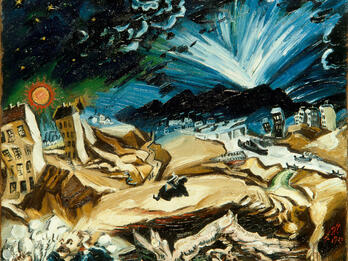
Apokalyptische Landschaft (Apocalyptic Landscape)
Apokalyptische Landschaft is one of a series of cityscapes that Ludwig Meidner painted between 1912 and 1916. He was influenced by the work of the Italian futurists and their depictions of the…
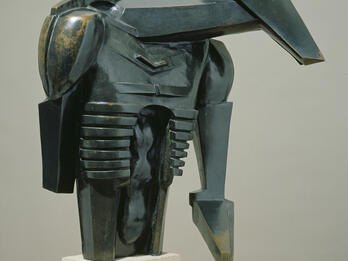
Torso in Metal from "The Rock Drill"
The first version of The Rock Drill, exhibited in 1915, was a white plaster figure sitting astride a real drill, an amalgam of man and machine. The sculptor, Jacob Epstein, originally intended it as a…
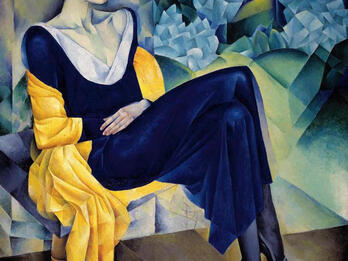
Portrait of Anna Akhmatova
Natan Altman’s portrait of Anna Akhmatova (1889–1966) is his best-known work. He painted the famous poet in St. Petersburg in a cubist style, against a background of blue quartzlike and green…

Cover Design for "Istoria evreiskogo naroda"
Rachel Bernstein-Wischnitzer’s cover design for Istoria evreiskago naroda (History of the Jewish People) features a title with dramatically stylized letters and a gold and black pattern that evokes…
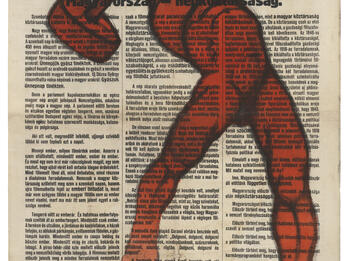
Red Hammer Man with Chains
Red Hammer Man (which debuted in 1912) was used on posters during Hungary’s 1919 revolution and was reproduced over the years as a key figure of socialist propaganda. The heroic figure wielding a…
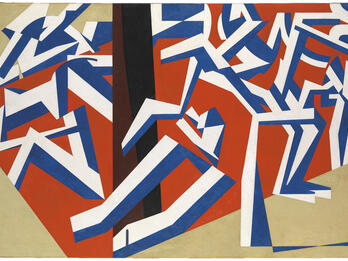
The Mud Bath
The blue and white abstract shapes in The Mud Bath evoke human figures in motion against a field of red. Are they meant to be people at a public bathhouse? Or are they interpreted that way because the…

